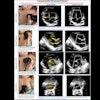J Nucl Med 2001 Mar;42(3):432-45
Radiolabeled amino acids: basic aspects and clinical applications in
oncology.
Jager PL, Vaalburg W, Pruim J, de Vries EG, Langen KJ, Piers DA.
As the applications of metabolic imaging are expanding, radiolabeled amino acids
may gain increased clinical interest. This review first describes the basic
aspects of amino acid metabolism, then continues with basic aspects of
radiolabeled amino acids, and finally describes clinical applications, with an
emphasis on diagnostic value. A special focus is on (11)C-methionine,
(11)C-tyrosine, and (123)I-iodomethyltyrosine, because these have been most used
clinically, although their common affinity for the L-transport systems may limit
generalization to other classes of amino acids. The theoretic and preclinical
background of amino acid imaging is sound and supports clinical applications.
The fact that amino acid imaging is less influenced by inflammation may be
advantageous in comparison with (18)F-FDG PET imaging, although tumor
specificity is not absolute. In brain tumor imaging, the use of radiolabeled
amino acids is established, the diagnostic accuracy of amino acid imaging seems
adequate, and the diagnostic value seems advantageous. The general feasibility
of amino acid imaging in other tumor types has sufficiently been shown, but more
research is required in larger patient series and in well-defined clinical
settings.















